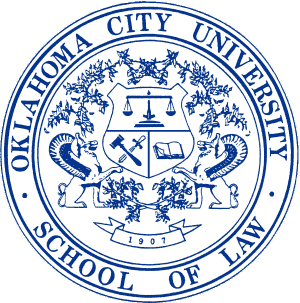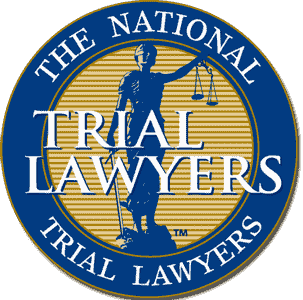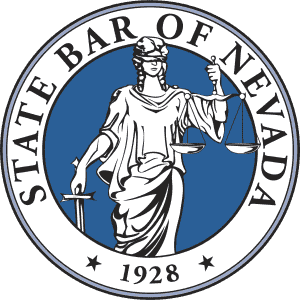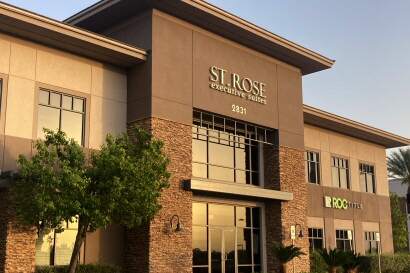WHAT IS A TRADEMARK AND WHAT CAN IT PROTECT
Estimated Reading Time: 12.7minutes
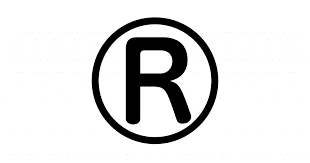
FIVE FACTS TO UNDERSTAND ABOUT A TRADEMARK
A trademark includes any word, name, symbol, device, or any combination, used or intended to be used to identify and distinguish the goods/services that distinguish one business from others in the market;
- A trademark puts the public on legal notice of ownership of the mark;
- Trademark protection gives you the legal right to be the sole user of your trademark in commerce;
- Trademark protection gives you the right to bring legal action against anyone who improperly uses your mark symbol;
- Registering gives you the right to use the symbol “R” with the
circle around it to designate that your trademark is registered and cannot be used by others.
What is the definition of a Trademark under the Law?
A trademark is a generally what we think of as a brand name. “A trademark or service mark includes any word, name, symbol, device, or any combination, used or intended to be used to identify and distinguish the goods/services of one seller or provider from those of others, and to indicate the source of the goods/services.” It establishes the brand of the goods and its origin or source. It can be a word, slogan, symbol, script, display and format combination of wording and design and combination thereof. It can also be a sound, color, or smell. A trademark establishes the source of goods and a service mark identifying the source of services like accounting or landscaping. However, the terms are used interchangeably and provide the same protections and use the same process to obtain.
https://www.uspto.gov/trademarks-getting-started/trademark-basics
Exactly What Types of Things does a Trademarks Protect?
At the time you start a business and begin using a name and/or logo or symbol, you have common law trademark protection for the use of your slogan. This protection may be of some help if someone infringes your trademark in your area or local market. However, it will not protect you if your business expands out of your limited local area. Someone in another state could start using your slogan and symbol in their area or on the internet. In order to have nationwide protection, you should register your marks with the U.S. Patent and Trademark Office (USPTO). Your application can be rejected if there is already a trademark in use that is too similar to yours for the same or similar goods or services.
How Do I search to see if my Trademark is already being used ?
The Trademark Electronic Search System (TESS)
(found at http://tmsearch.uspto.gov/bin/gate.exe?f=tess&state=4802:5qno0v.1.1)
is a database of all U.S. trademarks that have been registered or applied for to date. Many of the records in the TESS database include important elements of the mark and you should search each element. This allows you to find any marks that have common elements. In order to do this, you must choose from three “search options,” or interfaces. They have different features, but all search the complete database. To start, choose your search option based on the specifics of your business and your mark. There are three categories to choose from and they are as follows:
1) Basic word mark search
Use this option if you are searching based only on the words in the mark, the serial number, the registration number, or the owner name. This is a limited search option, likely searching a mark in use is registered.
2) Word and/or design mark search (structured)
This option is easy to use for a beginning TESS user and has all the functions of the advance option. This will help you build your search and search in any field to help you format your last search criteria.
3) Word and/or design mark search (free-form)
For the final search, you will use the information from the word/ design search for this portion. Detailed instructions are available in TESS. This requires you to use the prior options to set up your search. This is where an attorney can be of great assistance.
What is the difference between a Trademark and a Copyright?
A trademark protects “words, phrases, symbols, or designs identifying the source of the goods or services of one party and distinguishing them from those of others” whereas Copyright protects “original works of authorship” Think of it like this, a book or movie is protected by Copyright, and a symbol like the Apple with a bite out like iphone or the swoosh of Nike is are trademarks. Check out my previous blog on Copyright law for more information about Copyrights. A trademark is used to protect a brand name. A trademark or service mark includes “any symbol, word, name, device, or any combination, used or intended to be used to identify and distinguish the goods/services of one seller or provider from those of others, and to indicate the source of the goods/services.”
https://www.uspto.gov/trademarks-getting-started/trademark-basics
What is the Benefit of Registering my Work for a Trademark?
You may ask is federal registration of my Mark required. The short answer is no, but it will absolutely increase your rights when using your trademark in commerce. There are, with certain goods and services being used in trade, legal rights in the mark known as common law rights. However, those common law rights are meant to be limited and to only cover a limited geographic area. Also, it may likely be more difficult to enforce those rights than it would be if you have a federal registration. Registering your Mark and obtaining Federal registration protection greatly enhances your rights. Specifically, federal registration of your trademark on the principal registry provides the following rights and advantages:
1) It gives you a legal presumption of the exclusive right to use your mark nationwide on or in connection with the goods and services identified in your registration; in contrast to a state trademark registration that only gives rights within the borders of that particular state. Federal registration will give you a presumption of rights throughout the United States and its territories
2) As the owner of the Mark, that’s a real advantage if you need to enforce your registration either in or out of court. However, be aware that even with that legal presumption of ownership, someone else could prove that they are the rightful owner because they started using the mark before you. This means a possibility exists that you might have to stop using your Mark
3) It puts the public on notice that you are the owner of the Mark. If there’s a question as to ownership of the mark, it can be looked up in the US PTOs online database.
4) The fourth benefit is being listed in the United States PTO database. This means that others considering the potential mark can find you or Mark when they search the US PTO database to see if their Mark is available. Existence of your mark in the database can help others avoid selecting a mark that is too similar to yours. In addition, the US PTO relies on the same database for its own search and will find your Mark when examining someone else’s application. The US PTO will site your registration against a confusingly similar Mark later filed, preventing a potentially conflicting trademark from registering. But remember, you’re only searching in the US PTO database of pending, federally registered marks. It is not a search for state registrations from works that are not federally registered owners of unregistered marks may have superior Common law rights
5) A federal trademark registration gives you the ability to record your trademark with US customs and border protection. That agency will use your trademark registration to help prevent importation of infringing or counterfeit for a good.
6) You have the right to bring legal action concerning the registered mark in federal court; keep in mind that the US PTO cannot enforce your trademark rights or bring legal action against any infringement. It is your legal responsibility to police your trademark and protect it from infringement. Only your attorney may bring legal action against others infringing on your mark.
7) You have the ability to use your federal trademark Registration as a basis for applying for a trademark registration in many foreign countries. It is a great benefit when your business takes off and you become a global phenomenon.
8) A federal trademark registration means that you have the coveted right to use the R in the circle symbol with your mark, something you cannot do unless your work is federally registered. That symbol is typically placed on the right side of the mark and indicates that you have federally registered your trademark with the United States patent and trademark office. It puts the public on notice that your mark is registered and that you have nationwide rights to the Mark.
Registration provides a lot of benefits. Millions of trademarks are registered with the United States trademark and patent office. If you need protection for your business trademark or symbol, I highly recommend applying for a trademark to protect your intellectual property.
What is a Trademark Clearance Search and Why should I do one?
The answer is definitely yes A trademark clearance search is necessary to determine if your trademark has already been registered with the United States Patent and Trademark Office. When searching, you should look for existing trademarks, common law or unregistered trademarks (search the internet for your business to look for others that my use a similar mark), look for expired marks and pending applications, and abandoned marks as well.
When assessing a trademark’s availability, pay close attention to any similar marks that may be used in association with any related services or goods. Assessing the similarity of a mark is accomplished by analyzing the aural, visual, and connotative likeness of the mark. Before applying for trademark registration or using a mark, it is recommended that you perform an adequate search to see if others are using the same trademark as your own or one that is comparable.
The USPTO grants trademark rights based solely on use alone and not necessarily on registration. Therefore, only researching the USPTO trademark database is not sufficient to determine whether your desired mark is free to use.
Will my Trademark be Recognized in other Countries?
The answer is no, a U.S. trademark registration will not protect your trademark in a foreign country. Trademarks are considered territorial and owners of the marks must file in each country where they are seeking protection. . However, there is a way for qualified owners of trademarks to obtain registration in any of the countries that have joined the Madrid Protocol by filing a single application. The application is called the “international application,” and it is filed with the International Bureau of the World Property Intellectual Organization (WIPO), through the USPTO. As of April 2014, U.S. applicants can apply for protection in up to 92 countries in one application. For more information on filing an international application, see the Madrid Protocol at https://www.wipo.int/treaties/en/registration/madrid_protocol/
To file with a specific country, check WIPO’s list of international trademark offices at https://www.wipo.int/directory/en/urls.jsp . It is important to consider registering transliterations (representations of words in the corresponding characters of another alphabet) when making trademark decisions in foreign countries. The WIPO Madrid Protocol Fee Calculator found at https://www.wipo.int/madrid/en/fees/calculator.jsp is a tool for estimating filing costs using the Madrid Protocol. It is an average of $200 per country or about $25,000 to register in all which is not likely necessary.
Your personal information will be available to the public when you receive your Trademark.
All information that is submitted to the USPTO during the application and/or registration process will become public record, and this includes your name, phone number, e-mail address, and street address. When you file the application, you will be required to acknowledge that YOU HAVE NO RIGHT TO CONFIDENTIALITY in the information submitted. Anyone will be able to view this information in the USPTO’s on-line databases. This information will remain public even if the application is later abandoned, surrendered, cancelled, or expired. https://www.uspto.gov/trademark/trademark-updates-and-announcements/trademark-data-available-public
Can a domain name be Trademarked?
Yes. A mark that contains a domain name may be registered as a trademark or service mark in the U.S. Patent and Trademark Office. The domain name is registrable as a trademark only if it serves to identify a certain source of goods or services offered.
How Long does the Process Take?
The process generally takes about three to six months if your application is successful. The time depends on a number of factors that can include: Difficulty level of material; Whether physical deposit was online or paper; Whether the Copyright Office needs additional information; and The Number of staff available at any given time.
At the Law Offices of Laura Payne-Hunt, TheOneLawyer, we provide professional and personal service to each and every one of our clients. Although we handle personal injury matters, with 20 years’ experience, we can refer you to specialists in most fields of law that we have personal knowledge regarding their ability. If you have a question regarding any type of personal injury or paying your medical bills from an accident, please don’t hesitate to call the offices of TheOneLawyer.com and speak directly to attorney Laura Marie Payne-Hunt, Esq. a Henderson Injury Attorney for over 15 years. Laura is recognized as one of Nevada’s Top 100 Lawyers. She has the experience and knowledge to obtain the maximum settlement you deserve. Please call our office if you or a loved one is injured. We can make sure that you receive the care you need and deserve and advise on how to preserve evidence.
At our office, we are experienced in helping injured victims get the compensation they are entitled to. Insurance companies never have the best interest of the injured person at the top of their priorities. They want to pay as little on every claim as possible. Having worked for an insurance company as an attorney for 9 years before opening my boutique law firm specializing in helping injured people, I have reviewed thousands of auto accident claims and policy provisions.
At the Henderson and Las Vegas Accident injury law offices of TheOneLaweyer.com, Laura Marie Payne-Hunt and her staff are here to help you and your family in the event that accidents and tragedies occur. For any of your legal needs, do not hesitate to contact our Henderson and Las Vegas Accident injury offices. TheOneLawyer.com is a boutique, family owned law firm that specializes in helping injured people and the community of Las Vegas and Henderson Nevada with legal issues involving auto accidents, wrongful deaths, slip and falls, truck accidents, injuries to children, bicycle accidents, dog bites, product liability claims, and all types of injury claims. Please do not hesitate to call us anytime you have a legal question or you or a loved one has sustained an injury at 702-450-(HUNT) 4868 and text 24/7 at 702-600-0032.

